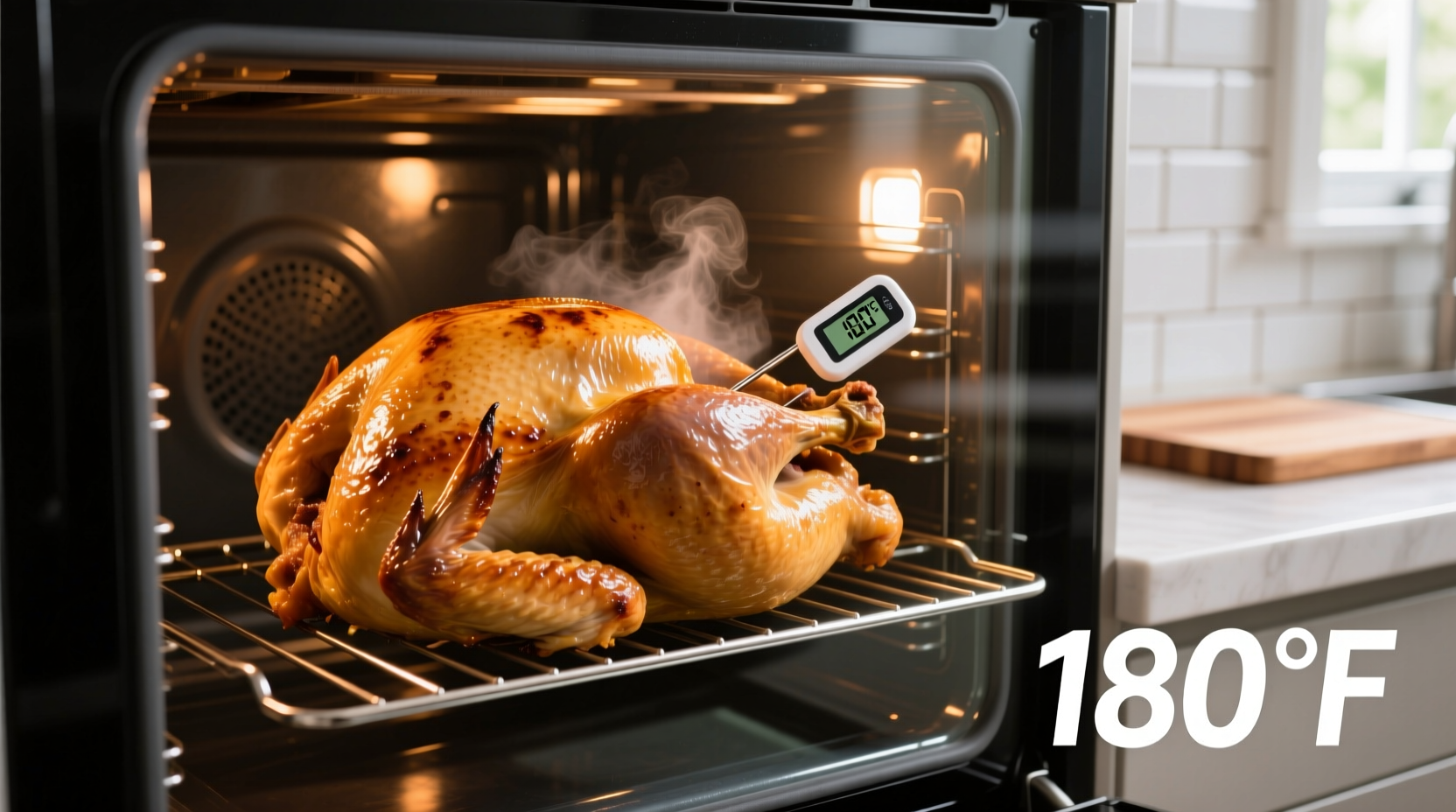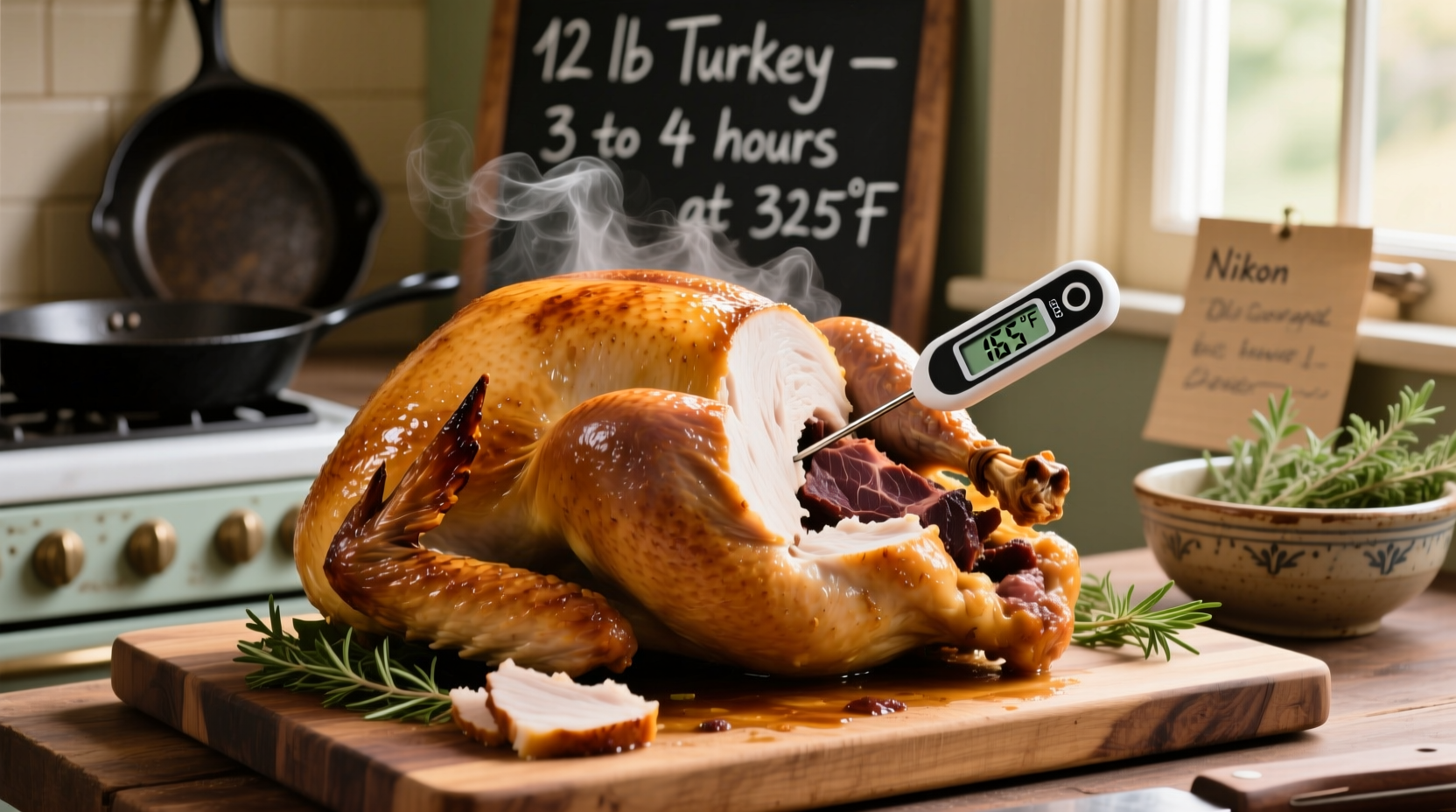For a 12-pound unstuffed turkey roasted at 325°F, the USDA recommends cooking for approximately 2 hours and 45 minutes—or about 13-15 minutes per pound—until the internal temperature reaches 165°F in the thickest parts of the breast and thigh. Always verify with a food thermometer for food safety.
Preparing the perfect turkey for your holiday meal requires precise timing and temperature control. Getting it right ensures moist, flavorful meat while preventing foodborne illness. Whether you're a first-time cook or refining your technique, understanding the exact cooking requirements for a 12-pound bird eliminates guesswork and guarantees success.
Pre-Cooking Preparation: Setting Yourself Up for Success
Proper preparation significantly impacts cooking time and results. Before your turkey even enters the oven, complete these essential steps:
- Thaw completely – Allow 24 hours of refrigerator thawing per 4-5 pounds (a 12-pound turkey needs 3 full days)
- Bring to room temperature – Remove from refrigerator 1 hour before roasting for even cooking
- Dry the skin – Pat thoroughly with paper towels to ensure crisp skin
- Season properly – Apply oil or butter under and over the skin with your preferred herbs

Cooking Timeline: Your Step-by-Step Guide
Follow this detailed cooking process for optimal results with your 12-pound turkey:
Phase 1: Oven Setup and Initial Roasting (0-60 minutes)
Preheat your oven to 325°F – the ideal temperature for even cooking without drying. Place the turkey breast-side up on a rack in a roasting pan. Insert an oven-safe thermometer into the thickest part of the breast, avoiding bone. Roast uncovered for the first hour to begin crisping the skin.
Phase 2: Mid-Cooking Monitoring (60-120 minutes)
After the first hour, check the turkey's progress. Baste only if necessary (excessive basting extends cooking time). If the skin is browning too quickly, tent loosely with foil. Continue roasting until the internal temperature reaches approximately 140°F.
| Weight | Unstuffed Cooking Time | Stuffed Cooking Time | Safe Internal Temp |
|---|---|---|---|
| 8-12 lbs | 2½-3 hours | 3-3½ hours | 165°F (breast & thigh) |
| 12-14 lbs | 3-3¾ hours | 3¾-4¼ hours | 165°F (breast & thigh) |
| 14-18 lbs | 3¾-4¼ hours | 4¼-4½ hours | 165°F (breast & thigh) |
Source: USDA Food Safety and Inspection Service (official guidelines)
Phase 3: Final Cooking and Temperature Verification (120-165 minutes)
During the final hour, monitor the internal temperature every 15-20 minutes. The turkey is done when:
- Breast reaches 165°F
- Thigh reaches 165°F
- Stuffing (if used) reaches 165°F
Never rely solely on cooking time—always verify with a food thermometer. Insert the thermometer into the deepest part of the meat without touching bone.
Critical Safety Considerations You Must Know
Food safety is non-negotiable when cooking poultry. The USDA's Food Safety and Inspection Service emphasizes that undercooked turkey poses serious health risks:
- 165°F is the minimum safe temperature – This kills harmful bacteria like salmonella and campylobacter
- Stuffing requires special attention – Cook separately for best results, or ensure it reaches 165°F if stuffed inside the bird
- Resting time matters – The turkey's temperature will rise 5-10°F during resting
According to the FDA Food Code, poultry must reach 165°F to be considered safe for consumption. Lower temperatures may seem acceptable but risk foodborne illness, especially for vulnerable populations.
Resting and Carving: Don't Skip This Critical Step
After removing your turkey from the oven, let it rest for 20-30 minutes before carving. This crucial step allows:
- Juices to redistribute throughout the meat
- Carryover cooking to complete the process
- Easier carving with cleaner slices
Cover loosely with foil during resting—not tightly, which would make the skin soggy. This resting period ensures your carefully cooked turkey remains moist and flavorful.
Troubleshooting Common Turkey Cooking Problems
Even with careful planning, issues can arise. Here's how to handle them:
Turkey Cooking Too Slowly
If your turkey is falling behind schedule:
- Verify your oven temperature with an independent oven thermometer
- Remove any foil tenting that might be slowing cooking
- Consider increasing oven temperature by 25°F (but monitor closely)
Turkey Browning Too Quickly
If the skin is darkening faster than expected:
- Tent loosely with aluminum foil
- Move the turkey to a lower oven rack position
- Reduce oven temperature by 25°F
Dry Breast Meat
Prevent dryness by:
- Brining the turkey beforehand
- Applying butter or oil under the skin
- Cooking breast-side down for the first hour, then flipping
- Removing the breast from the oven once it reaches 160°F (it will carry over to 165°F)
Alternative Cooking Methods and Their Timing
Different cooking approaches affect timing for your 12-pound turkey:
- Convection oven: Reduce time by 25% (approximately 2 hours total)
- Grilling: 11-13 minutes per pound at 325°F (indirect heat)
- Smoking: 30-40 minutes per pound at 225-250°F (approximately 6 hours)
- Spatchcocking: 60-75 minutes at 425°F (removing backbone for flat roasting)
Regardless of method, always verify with a thermometer rather than relying solely on time estimates.
Why Timing Varies: Understanding the Variables
Your actual cooking time may differ from estimates due to several factors:
- Oven accuracy – Many home ovens have temperature variations of ±25°F
- Starting temperature – A turkey straight from the fridge takes longer than room-temperature bird
- Pan type – Dark roasting pans cook faster than shiny metal
- Oven crowding – Other items in the oven affect heat circulation
- Stuffing – Adds 30-45 minutes to cooking time and requires careful temperature monitoring
These variables explain why time-per-pound calculations provide only estimates—the thermometer remains your most reliable indicator of doneness.











 浙公网安备
33010002000092号
浙公网安备
33010002000092号 浙B2-20120091-4
浙B2-20120091-4